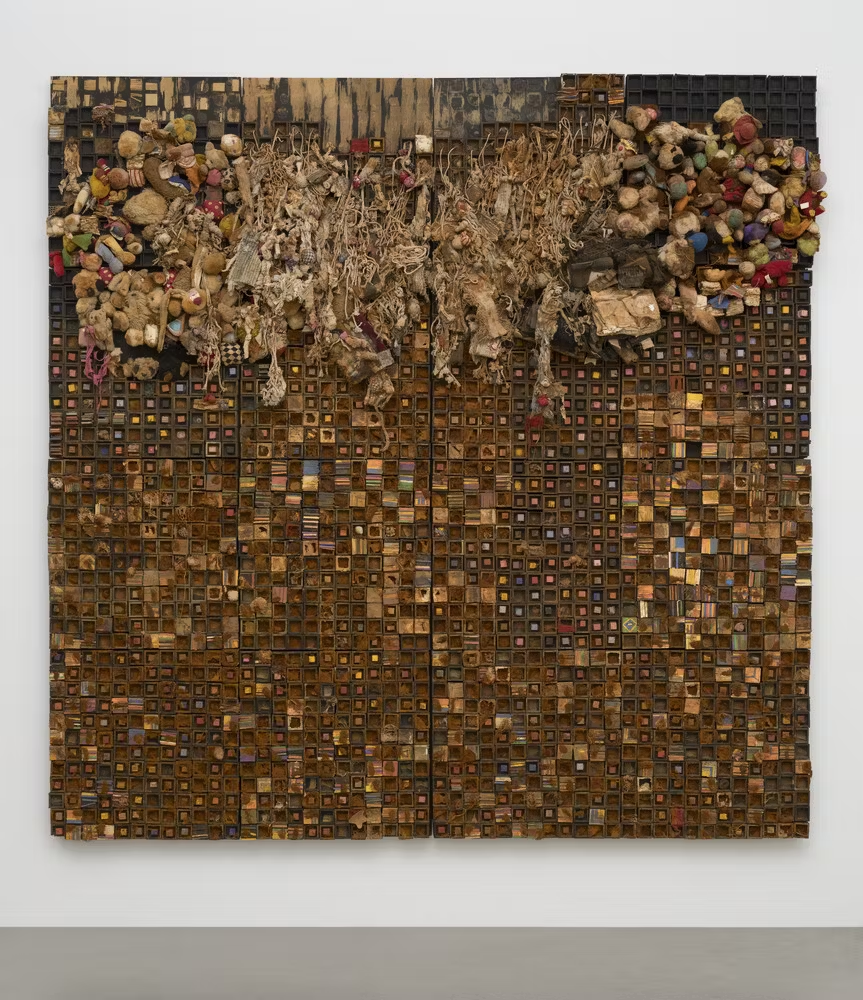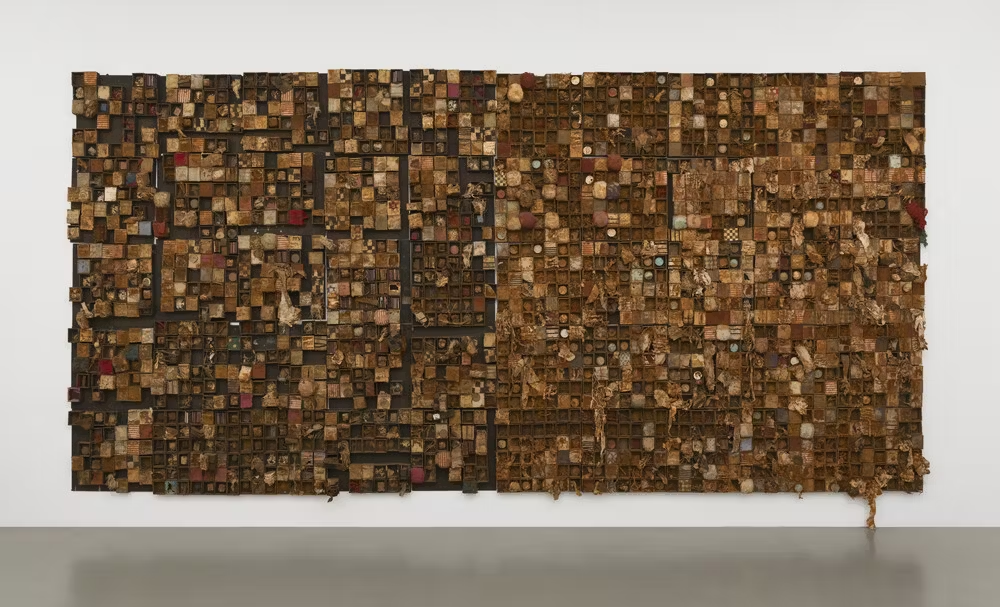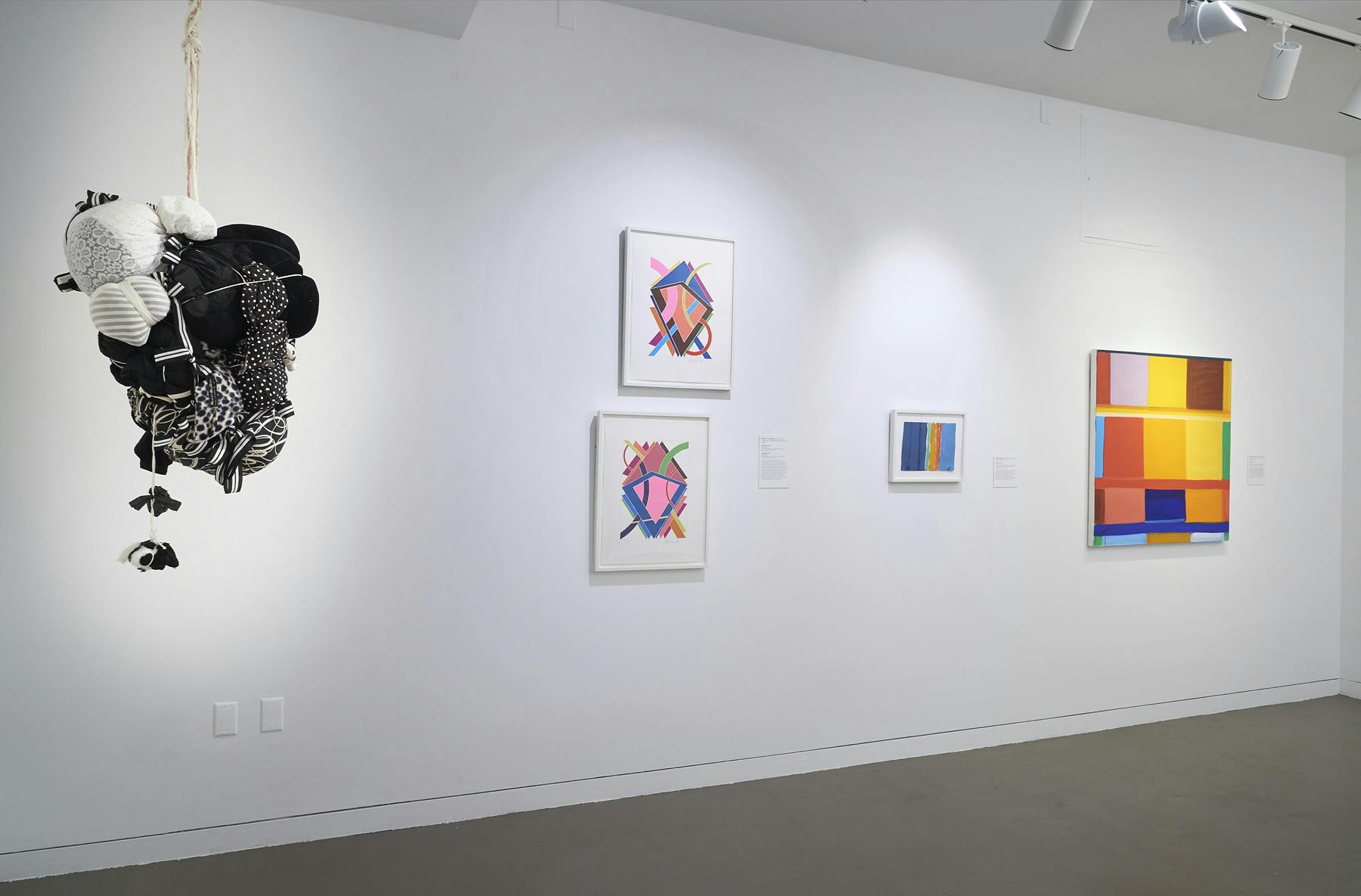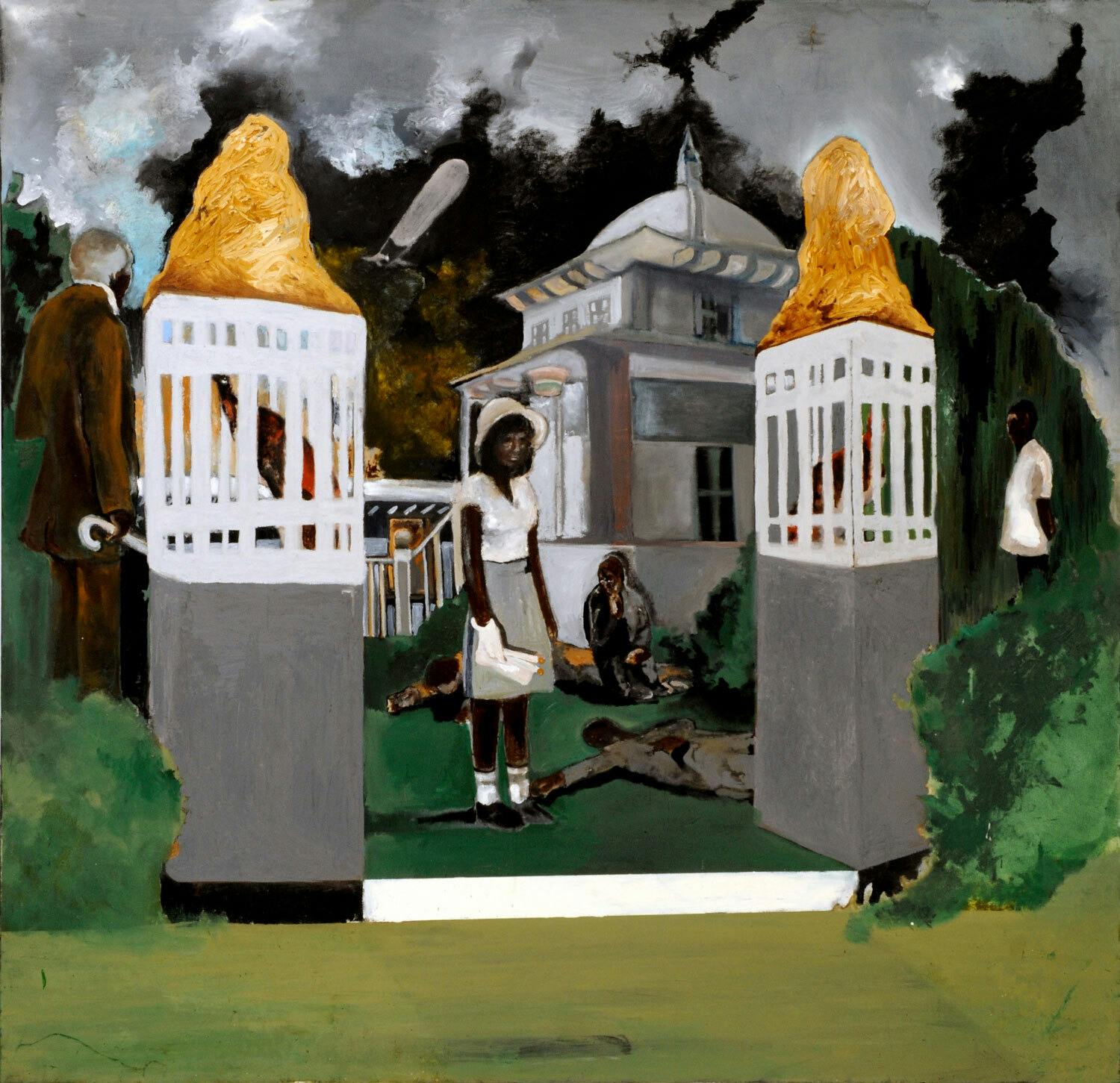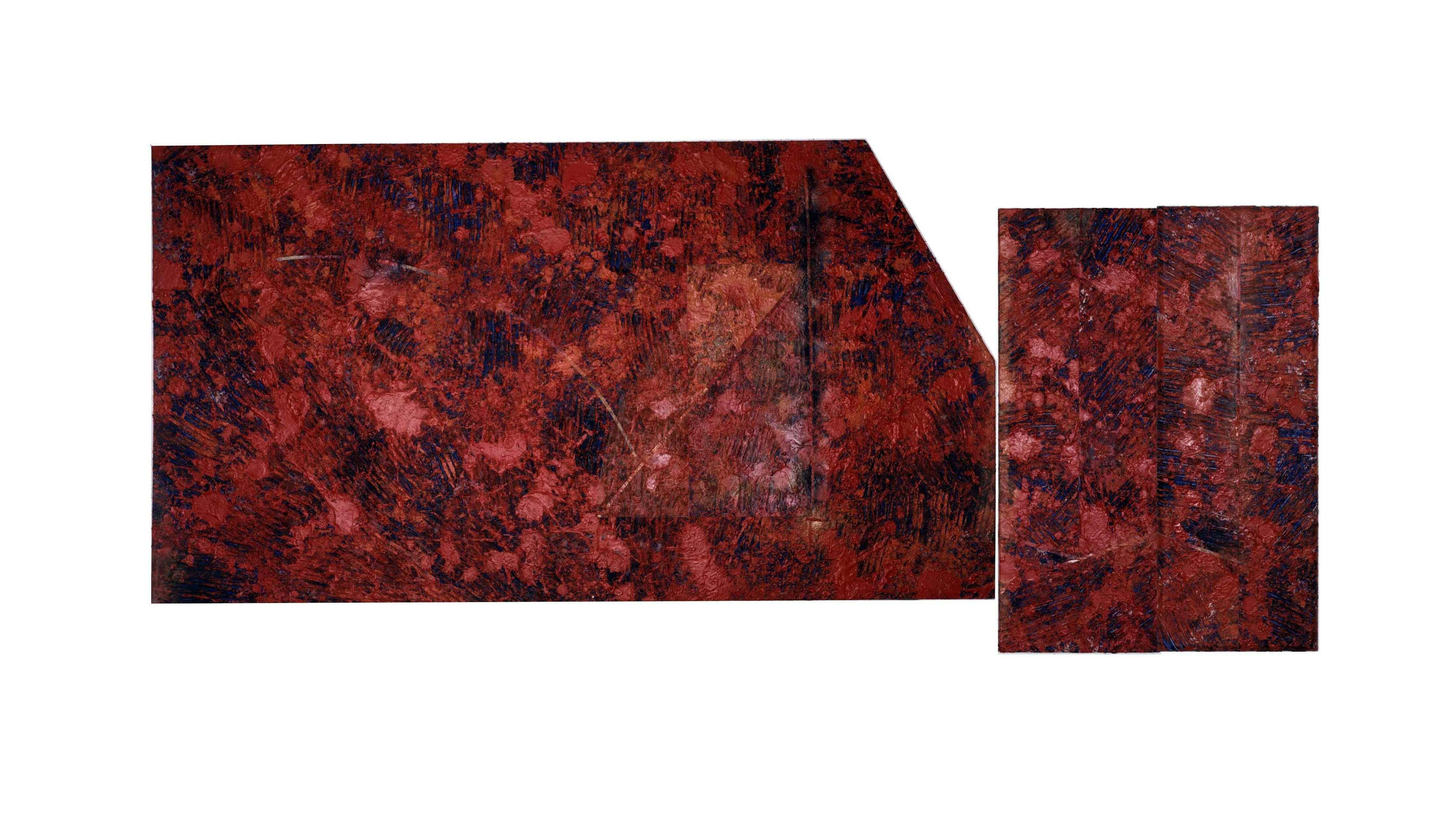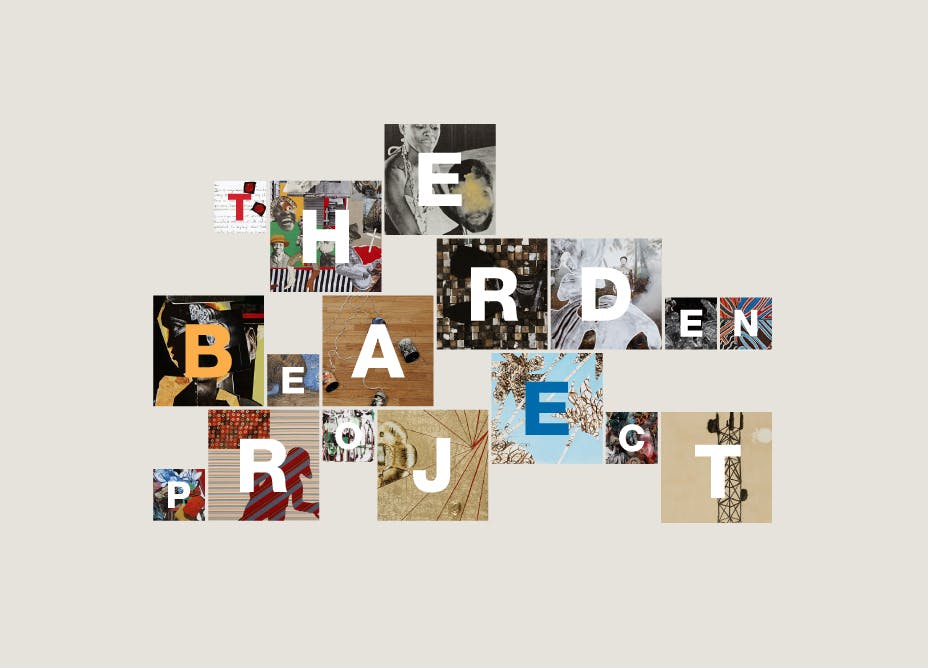Leonardo Drew
(b. 1961)1990–91 Artist in ResidenceIn abstract sculptures that oscillate between order and chaos, Leonardo Drew experiments with processes of material transformation.
Biography
Leonardo Drew manipulates wood, metal, and textiles to meditate on the industrial past and present of the United States.
He grew up in Bridgeport, Connecticut, in a housing project that overlooked the city dump. One of five children raised by a single mother, he fixated on drawing from an early age, sketching on the back of school tests and the walls of his family’s apartment. His grandmother suggested that art supplies would focus his efforts. At age thirteen, Drew presented his first solo exhibition of his action-figure drawings at State National Bank in Bridgeport. He was scouted by Marvel and DC comics as an illustrator following the exhibition, but elected to study instead. He applied to Parsons School of Design, where he shifted into abstraction. He then transferred to the Cooper Union and studied under Jack Whitten. Whitten, whose emphasis on materiality within his own practice greatly inspired Drew, lent the young artist his studio so that Drew could complete a monumental sculpture. Drew’s travels in Senegal, China, and Peru have grown and expanded his visual language over the years.
Since the 1990s, Drew has honed a practice in which his large-scale, mixed-media works often begin with materials found near his home. While some of these materials are already decayed when he discovers them, he subjects other objects to intentional aging processes, such as oxidation, burning, and weathering. These processes offer new modes through which to see the weighted history of materials such as cotton and rust. However, he refuses simplistic readings of his works by numbering them, noting that this allows “viewers to be complicit in completing the work and to have their journey within the work. It’s a ‘mirror,’ and you should be able to find yourself in it.”[1]
Drew earned his BFA from Cooper Union. He received a Joan Mitchell Foundation Grant (1994); Asian Cultural Council Grant (1997); and National Academician (2022). He was the 1990–91 cohort of the Studio Museum’s Artist-in-Residence program. The Studio Museum awarded Drew the Joyce Alexander Wein Prize in 2011, and has presented his work in Passages: Contemporary Art in Transition (1999); The Bearden Project (2011); and Black: Color, Material, Concept (2015).
“Nothing Is Missed: Leonardo Drew Interviewed by Kennedy Yanko,” BOMB Magazine, October 12, 2021, bombmagazine.org/articles/2021/10/12/nothing-is-missed-leonardo-drew-interviewed/
Exhibitions and Events
Leonardo Drew
(b. 1961)1990–91 Artist in ResidenceIn abstract sculptures that oscillate between order and chaos, Leonardo Drew experiments with processes of material transformation.
Number 74, 1999
Biography
Leonardo Drew manipulates wood, metal, and textiles to meditate on the industrial past and present of the United States.
He grew up in Bridgeport, Connecticut, in a housing project that overlooked the city dump. One of five children raised by a single mother, he fixated on drawing from an early age, sketching on the back of school tests and the walls of his family’s apartment. His grandmother suggested that art supplies would focus his efforts. At age thirteen, Drew presented his first solo exhibition of his action-figure drawings at State National Bank in Bridgeport. He was scouted by Marvel and DC comics as an illustrator following the exhibition, but elected to study instead. He applied to Parsons School of Design, where he shifted into abstraction. He then transferred to the Cooper Union and studied under Jack Whitten. Whitten, whose emphasis on materiality within his own practice greatly inspired Drew, lent the young artist his studio so that Drew could complete a monumental sculpture. Drew’s travels in Senegal, China, and Peru have grown and expanded his visual language over the years.
Since the 1990s, Drew has honed a practice in which his large-scale, mixed-media works often begin with materials found near his home. While some of these materials are already decayed when he discovers them, he subjects other objects to intentional aging processes, such as oxidation, burning, and weathering. These processes offer new modes through which to see the weighted history of materials such as cotton and rust. However, he refuses simplistic readings of his works by numbering them, noting that this allows “viewers to be complicit in completing the work and to have their journey within the work. It’s a ‘mirror,’ and you should be able to find yourself in it.”[1]
Drew earned his BFA from Cooper Union. He received a Joan Mitchell Foundation Grant (1994); Asian Cultural Council Grant (1997); and National Academician (2022). He was the 1990–91 cohort of the Studio Museum’s Artist-in-Residence program. The Studio Museum awarded Drew the Joyce Alexander Wein Prize in 2011, and has presented his work in Passages: Contemporary Art in Transition (1999); The Bearden Project (2011); and Black: Color, Material, Concept (2015).
“Nothing Is Missed: Leonardo Drew Interviewed by Kennedy Yanko,” BOMB Magazine, October 12, 2021, bombmagazine.org/articles/2021/10/12/nothing-is-missed-leonardo-drew-interviewed/


